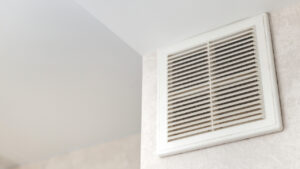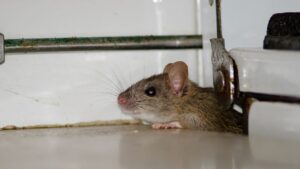Air duct cleaning might seem like a routine chore, but its benefits extend far beyond just removing dust, lint, pollen, debris, bacteria, and mold particulates. Interestingly, it plays a critical role in the less-discussed battle against unwelcome guests like termites and, most importantly, mouse.
These pesky intruders find air ducts to be a perfect highway for moving throughout your home, often leaving a trail of destruction and health risks in their wake.
However, by understanding how duct cleaning helps evict these uninvited inhabitants, homeowners can take a proactive stance on pest control.
Universal Duct Cleaning is part of the Universal Pest family of companies. We offer our expertise in rodent removal, insulation repairs, and duct cleaning to create the article. This blog helps to uncover how this often-overlooked service can be your secret weapon in maintaining a cleaner, healthier living environment.
The Connection Between Air Duct Cleaning and Rodents
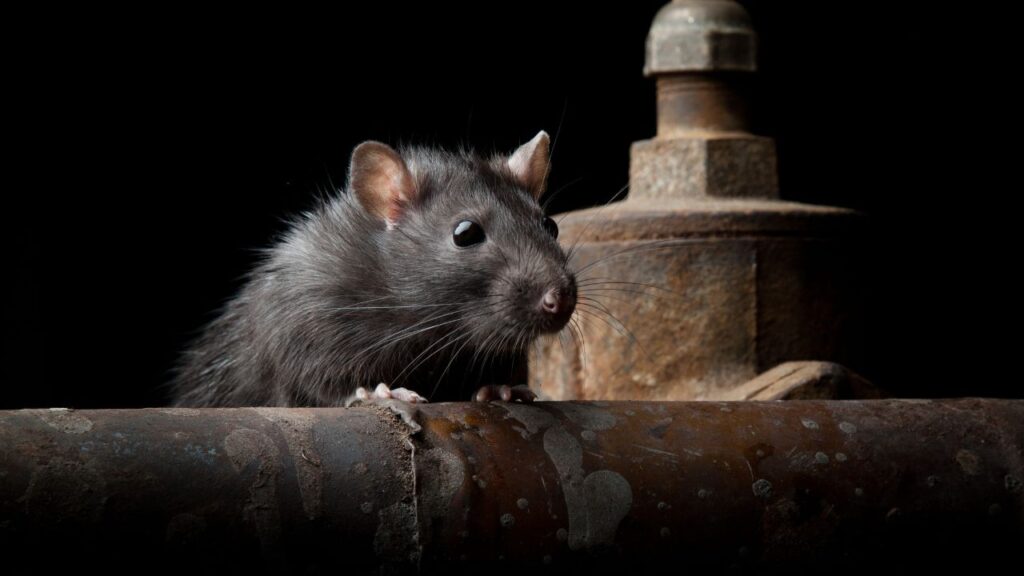
Rodents have a notorious reputation for finding their way into the nooks and crannies of homes, with air duct systems being no exception. And while it’s pretty hard to see a mouse coming out of an air duct or running across the room, believe it when we say they are there.
The worst thing is these unwelcome guests not only introduce health risks but can also significantly impair indoor air quality. It is, therefore, imperative to understand how these rodents infiltrate air duct systems. This might shed more light on how to control or get rid of these mouse pests.
On the flip side, maintaining clean air ducts plays a pivotal role in making the environment less appealing to rodent infestations.
So, let’s dive more into the dynamics between air duct cleaning and rodent prevention. Let’s get insights into how homeowners can safeguard their homes against these prevalent pests.
Understanding How Rodents Enter Air Duct Systems
Rodents often find their way into air duct systems through small openings between the ductwork and the walls, roof, crawl space, or foundation. They can also get in through gaps around the ductwork, floor vents, or even through damaged duct areas. Lastly, the attic and basement can also be the source of your mouse problem, especially mice in your air ducts.
These clever intruders exploit any weak spot in a home’s exterior or the duct system’s structure, squeezing through spaces as tiny as a mouse. Once inside, they navigate the ductwork, making it a prime route for entry into a home’s interior spaces.
The Role of Clean Ducts in Discouraging Pest Infestations
Keeping air ducts clean plays a critical role in deterring rodents like mouse from making themselves at home. By removing the accumulation of dirt, debris, and potential nesting materials, clean ducts offer less attraction to these pests seeking shelter.
This proactive measure reduces the likelihood of a mouse infestation, safeguarding both the air quality and the health of a home’s occupants. Remember, rodents not only cause air pollution through their feces and urine odor, but they can also be the source of several disease-causing germs and viruses.
Signs of Rodent Presence in Your Air Ducts
Spotting rodents in air ducts isn’t always straightforward.
Yet, certain signs can alert homeowners to their presence long before seeing one. But seeing them isn’t an every-moment scenario.
Key indicators include unusual noises and distinct odors coming from the ductwork. These clues often prompt a closer inspection, leading to the discovery of physical evidence that confirms a mouse problem.
Taking note of these early warnings can be critical in addressing infestations promptly, safeguarding both the home’s air quality and the health of its occupants.
Let’s see how identifying specific sounds and smells, along with tangible signs, can guide homeowners in confirming and tackling rodent issues within their air duct systems.
Identifying Noises and Odors as Key Indicators
Scratching sounds in the walls or ceiling and an unpleasant, musky odor often serve as the first alarms of rodent activity within air duct systems. These auditory and olfactory clues signal homeowners to potential intruders, even when these pests remain out of sight, emphasizing the need for prompt inspection and action.
Mostly, you’ll notice the odor whenever your furnace or air conditioning system is running. This is because the air is being circulated between the house and the air ducts.
Physical Evidence That Signals a Rodent Problem
Discovering droppings or nesting materials in or near air duct entrances is a telltale sign that rodents have invaded the system. These physical traces, often accompanied by gnaw marks on ductwork or wiring, underscore the urgency of addressing the infestation to protect a home’s air quality and structural integrity.
Benefits of Regular Air Duct Cleaning for Pest Control
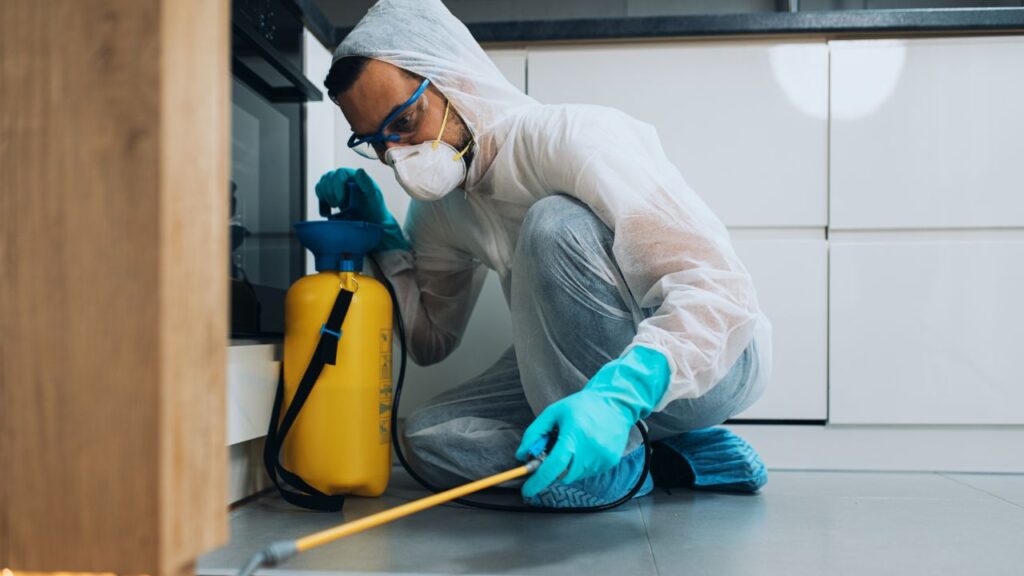
Getting to the heart of the matter, regular air duct cleaning emerges as a formidable line of defense in deterring rodents and other pests from invading homes.
For starters, meticulously removing the accumulated dust, debris, and organic detritus within ductwork cuts off a crucial resource for pests: their food supply.
Furthermore, a clean and well-maintained HVAC system loses its allure to pests seeking nesting grounds. This adds an extra layer of protection against infestations.
How Cleanliness Reduces Pests’ Food Sources
Cleanliness within air duct systems cuts off vital food sources for pests, including mouse. By ensuring air ducts are free from dust, debris, and organic matter, homeowners effectively starve unwanted guests. This makes the environment less hospitable for them to thrive.
This approach not only supports better air quality but also acts as a deterrent against pest infestations. It’s easier than trying to get rid of the rodents by setting up a mousetrap, right?
Making Your Home’s HVAC System Less Attractive to Pests
By investing in regular air duct cleaning, homeowners can significantly reduce the appeal of their HVAC systems to pests. Cleaning eliminates the debris and organic matter that pests, such as rodents, find enticing for nesting and sustenance.
This strategic move makes the home’s ventilation system far less attractive, disrupting the pests’ survival strategies and preventing them from settling in:
- Removal of debris reduces available nesting materials.
- Elimination of organic matter cuts off food sources for pests.
- Regular inspections detect and seal potential entry points.
Advanced Techniques Used in Air Duct Cleaning for Rodent Control
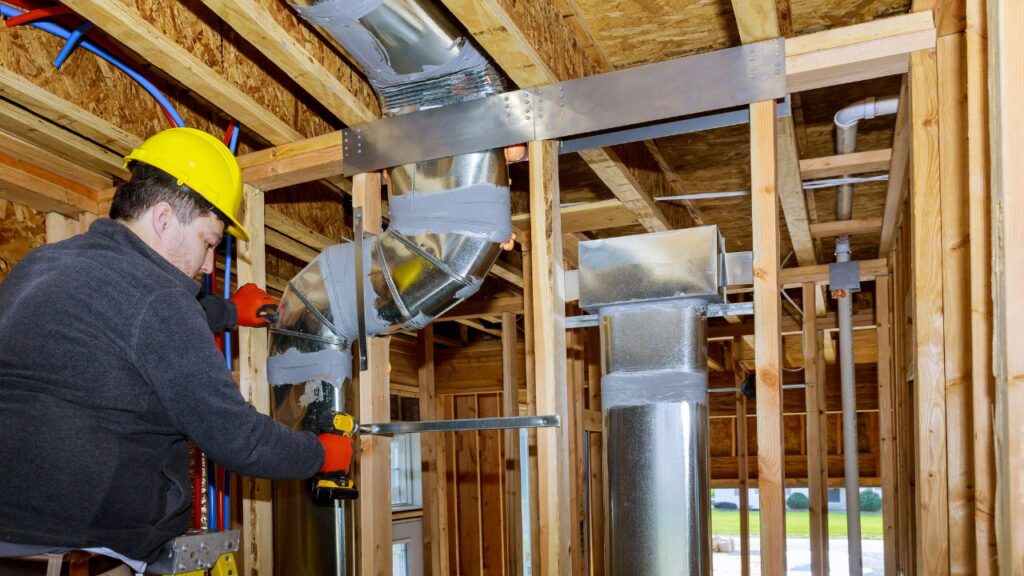
As we delve deeper into the fight against rodent invasions within our homes, air duct cleaning emerges as a critical battlefield.
Now, let’s see the available air duct cleaning techniques that help eradicate rodents like house mouse from our air ducts. This part also delves into some preventative measures to forestall future infestations.
First on our list is the deployment of HEPA-filtered vacuums, a powerful tool in the removal of airborne pollutants, including those left behind by rodents.
Following this, we’ll examine the meticulous process of sealing and repairing ductwork—the strategic defense against the recurrence of these unwanted guests.
Together, these advanced techniques form a robust approach to maintaining a clean, healthy, and rodent-free air duct system.
The Use of HEPA-filtered Vacuums to Remove Contaminants
In the battle against rodent infestations within air duct systems, the deployment of HEPA-filtered vacuums stands out as a notable advancement. These specialized vacuums, designed to trap 99.97% of particles down to 0.3 microns, effectively remove the contaminants that rodents leave behind, including dander, fur, and feces.
By purifying the air and surfaces within the ductwork, HEPA-filtered vacuums play a pivotal role in restoring indoor air quality and preventing the spread of allergens and pathogens.
The professionals also use specialized brushes to scrub any stubborn rodent feces, dust, mildew, or mouse stuck on the interior parts of the ducts. You should note that soft bristle brushes are used to clean air ducts that are made of fiberglass.
|
Technique
|
Role in Rodent Control
|
Benefits
|
|---|---|---|
|
HEPA-filtered Vacuums
|
Contaminant Removal
|
Improves air quality, minimizes allergens
|
Sealing and Repairing to Prevent Future Infestations
Sealing and repairing air ducts serve as a cornerstone strategy in preventing mouse infestations. By meticulously identifying and sealing off potential entry points, professionals can thwart rodents’ access to the air duct system.
This proactive approach not only hinders rodents’ ability to enter homes but also reinforces the overall integrity of the air duct system. It ensures a cleaner, healthier living environment for homeowners.
The Dangers of Rodents in Your Air Ducts
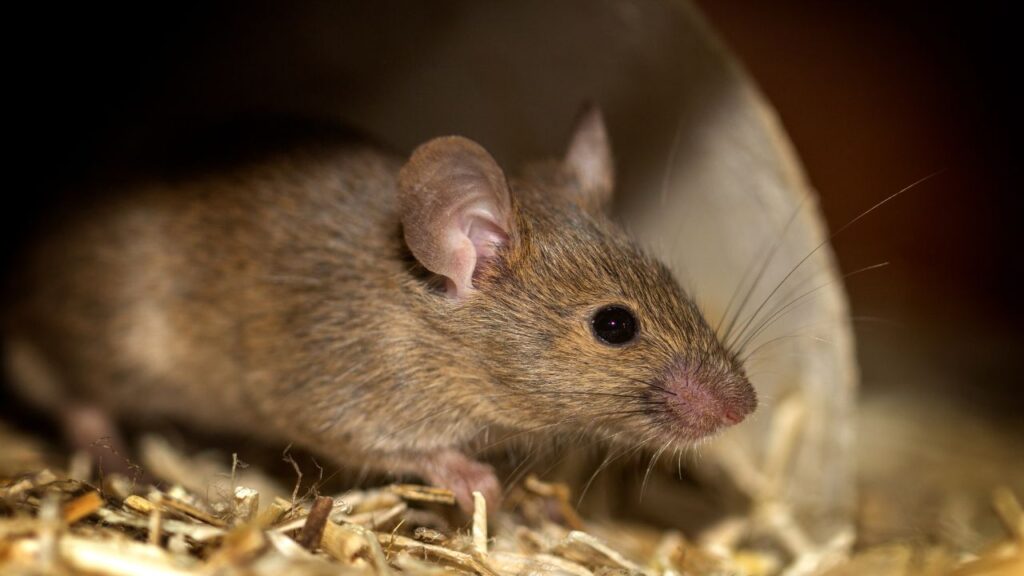
One of the most alarming and hazardous scenarios is when rodents like rats or mice infest the air ducts on your property. This not only creates an unsanitary situation but poses serious health risks if airborne contaminants spread through your HVAC system.
Here are some of the dangers rodents present when they inhabit air ductwork:
- Allergens – Rodent droppings, urine, dander, and dead bodies release allergens that can be distributed from the ducts into occupied areas of your home, triggering asthma attacks or allergies.
- Asthma Triggers – Rodent allergen particles become airborne through ductwork easily triggering asthma symptoms. Many cases of new or worsening asthma have been traced back to rodent infestations.
- Odors – Decaying rodent carcasses give off foul odors that permeate into living spaces through supply vents, creating an extremely unpleasant smell
- Bacteria – Rodents harbor Salmonella, E. Coli, and other harmful bacteria that can spread through shed fur and feces dispersed by air ducts. This bacteria can cause serious gastrointestinal illness if inhaled.
- Viruses – Diseases like Hantavirus found in mice urine and droppings can be transmitted by viral particles blown through ductwork. In rare cases, Hantavirus can be fatal.
- Parasites – Certain parasites and worms rodents carry, can be transported through airflow and potentially infect human occupants.
- Damage – Rodents can cause serious damage to your ductwork or HVAC components like the heat pump and air filter. They might also chew on electric wires, meaning that you’ll have to incur the cost of calling an electrician.
- More infestations – Some infestations lead to more infestations. For instance, mice infestations may attract snakes. The poison in some of these snakes might become an even bigger hazard for homeowners and their families. Squirrel infestations are also risky as they can clog the gutters and drainage pipes, causing water damage in your home.
- Entry into your clothes dryer vent – Rodents can enter into the dryer vents, which might require the services of a professional to remove them. Luckily, most air duct cleaning companies also specialize in rodent, pet, or bird removal from dryer vents.
The only remedy is professional extermination followed by complete disinfection and cleaning of the ductwork once rodents have been eradicated. Rodent infestations can create a major health hazard if allowed to infiltrate the air ducts. At the first signs like droppings or musky odors, contact a pest control expert immediately before contamination worsens.
Sealing any entry points near the heat pump or the air conditioning can prevent rodents from entering the air ducts. You can also install a mousetrap window screen mesh kit. This allows proper ventilation without risking rodent entry into your house.
Should You Call Pest Control Exterminators for Rodents in Your Air Ducts?
Yes! Besides seeking the services of air duct cleaners, it would also be wise to engage pest control professionals like Universal Pest. Here are some reasons why pest experts need to handle duct-dwelling rodents:
Specialized Extermination
Rodent infestations in ducts require specialized tactics and pesticides that only certified pest control exterminators have. DIY traps or repellents won’t eradicate mouse. Professionals have the necessary tools and training.
Source Removal
Air duct cleaning may solve the problem for a while. However, not getting to the root cause of the problem might mean a recurring infestation.
Usually, rodents in ducts indicate a breach where they entered. Exterminators identify and seal all duct entry points to prevent recurrence after removing the mouse infestation. DIY efforts would miss entryways.
Thorough Duct Disinfection
Once rodents are eliminated, technicians perform comprehensive pest control disinfecting and decontaminating of the ducts to neutralize dangerous allergens and waste. Homeowners can’t access or sanitize duct interiors effectively.
Odor Removal
The powerful chemicals pros use remove decaying carcass odors that linger in ducts, which homeowners lack. They also install antimicrobial treatments. However, be extremely careful when using chemicals like biocide. It might have adverse health effects on some people.
When rodents invade ducts, the contamination risks call for urgent professional remediation. Pest control experts have the tools, chemicals, rigor, and experience to fully remove rodents from ductwork, disinfect the system, neutralize odors, and prevent re-entry for safe and healthy air quality in your home. In some instances, like in the case of squirrels, you might need to call the wildlife or animal removal service to capture and relocate them.
How to Prevent Rodents from Getting into Your Air Ducts
Rodents gaining access to your home’s air ducts poses many health hazards. Here are some tips to help prevent mice, rats, or squirrels from infiltrating your HVAC ductwork:
- Seal All Openings – Inspect exterior vents and duct terminations for any gaps or holes that could allow rodent entry. Seal up any openings wider than 1/4 inch with copper mesh, caulk, foam, or metal plates.
- Install One-Way Vent Covers – Covers that allow air out but prevent rodents from getting in provide protection. Have HVAC pros fit exterior duct vents with one-way flaps or screens.
- Trim Back Vegetation – Keep trees, bushes, and leafy plants cut back away from the home and HVAC components. Vegetation touching the home offers rodents travel routes to ducts.
- Remove Debris – Clear away woodpiles, trash, lumber, and other clutter near duct vents that rodents could hide under while chewing into openings. Eliminate exterior clutter.
Mount Ducts High Up – Position exterior duct terminations and vents at least 3 feet off the ground when possible. This reduces accessibility for rodents attempting to enter ducts from ground level. - Treat Home Exterior – Applying rodent-repelling or anti-climbing formulations around likely access points helps deter them from approaching duct openings. Reapply every 1-2 months.
- Limit Food Sources – Pick up fallen fruit from trees, maintain compost tumblers securely, and avoid leaving pet food outside. Removing exterior food sources helps prevent infestations.
- Perform Regular Inspections – Routinely check duct vents for any signs of possible rodent entry like gnaw marks, rub marks, droppings, etc. Spotting issues early allows for quick sealing.
With some diligence, sealing, trimming, and proofing, you can help defend your ducts against destructive and unhealthy mouse invasion. Don’t let duct pests threaten your family’s health and comfort.
Conclusion
Air duct cleaning can help get rid of rodents in your air ducts. However, this process alone might not be sufficient to eradicate rodent infestations from your home.
Suppose you have a mouse, rat, squirrel, or raccoon infestation in your HVAC ductwork. In that case, you need pest control professionals to fully exterminate the rodents and properly seal up any duct entry points. Only after rodents are removed should certified duct cleaners be called in to disinfect, decontaminate, and deodorize the duct system to neutralize allergens and waste, thereby enhancing airflow improvement.
The combination of professional pest control followed by thorough duct cleaning provides the most complete solution for ridding your home of unhealthy duct-dwelling rodents.
For the best air duct cleaning services in Chesapeake, Hampton, all the way to Virginia Beach, call Universal Duct Cleaning. We are experts in several fields, including air duct cleaning, air duct repair and replacement, clothes dryer vent cleaning, air filter replacement, and duct sanitation. Visit our website today for a free quote and advice. For a healthier home, it’s essential to maintain good indoor air quality.
Frequently Asked Questions
How do I keep mice out of my air ducts?
To prevent mice from entering your air ducts, it's important to take preventive measures such as sealing any cracks or openings in your home's exterior. You can also install mousetrap s over vents and cover up holes around pipes and wires with steel wool or metal mesh. Keeping a clean and clutter-free environment can also discourage mice from making a home in your ducts.
Can air duct cleaning get rid of mice?
Yes, professional air duct cleaning can help get rid of mice in your air ducts. During the cleaning process, technicians will thoroughly clean and disinfect the interior of your ducts, removing any potential nesting materials or food sources for mouse. They may also be able to identify and seal any entry points that mice are using to access your ductwork.
Is duct cleaning helpful?
Duct cleaning can be beneficial for various reasons. It can improve the air quality in your home by removing dust, debris, and other pollutants from your ducts. This can especially benefit those with allergies or respiratory issues. Duct cleaning can also improve the efficiency of your HVAC system, as a buildup of dirt and debris can restrict airflow and put strain on the air conditioning system.
How do you mouse proof air vents?
Keeping mice out of air vents is important to ensure the safety and efficiency of your HVAC system. Here are some steps you can take to mouse-proof your air vents:
- Seal any openings or cracks around your air vents using caulk or mesh wire
- Install a metal mesh screen over the outside opening of your air vent
- Use peppermint oil or mothballs as natural deterrents, as mice are repelled by the scent
- Regularly inspect and clean your air vents to ensure there are no signs of mouse activity
Will duct seal keep mice out?
Duct sealing is an important maintenance task that can improve the efficiency of your HVAC system and prevent air leakage. While it may not completely keep mice out, it can help make it more difficult for them to enter through any cracks or openings in your ductwork.
Does duct cleaning help with smell?
It is common for dust, debris, and even mold to build up in air ducts over time. This can result in musty or unpleasant smells being circulated throughout your home. Regular duct cleaning can help remove these contaminants and improve the overall air quality in your home.
How do you know if mice are in your air ducts?
The presence of mice in your air ducts may not always be immediately obvious. Some signs to look out for include:
- Scratching or scurrying sounds coming from your air vents
- Droppings or gnaw marks around the outside openings of your air vents
- Unusual smells coming from your HVAC syste
If you suspect that there are mice in your air ducts, it is important to address the issue promptly to prevent any damage or health hazards.
How do you get dead rodents out of ductwork?
Rodents can sometimes find their way into air ducts and unfortunately, die inside. In this case, it's best to call a professional air duct cleaning service. They will have the equipment and expertise to safely remove the mouse and thoroughly clean and disinfect the affected area.


